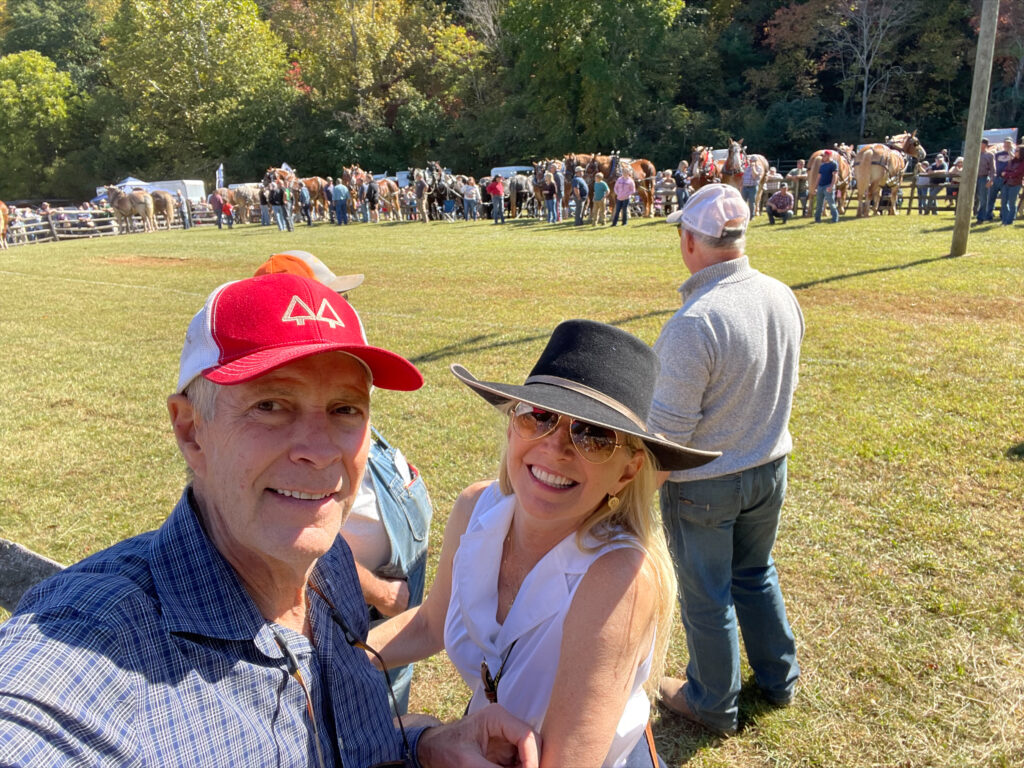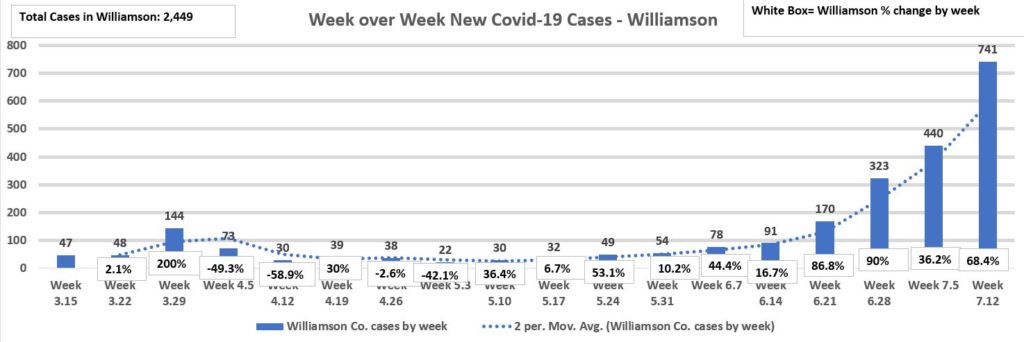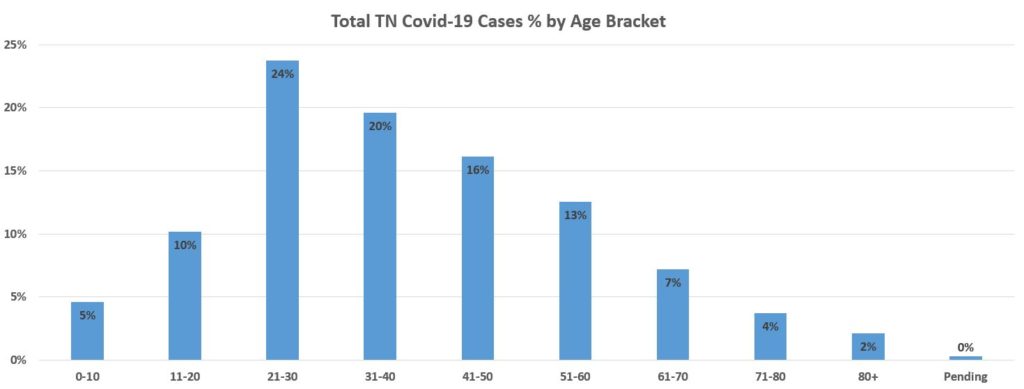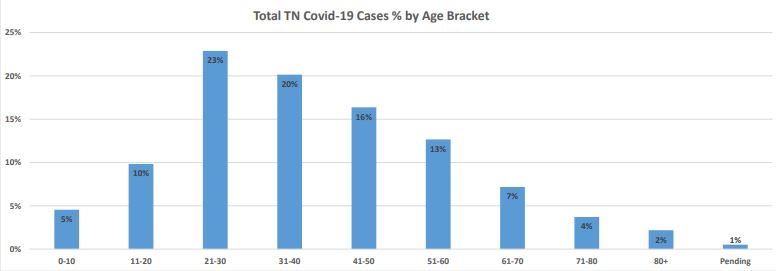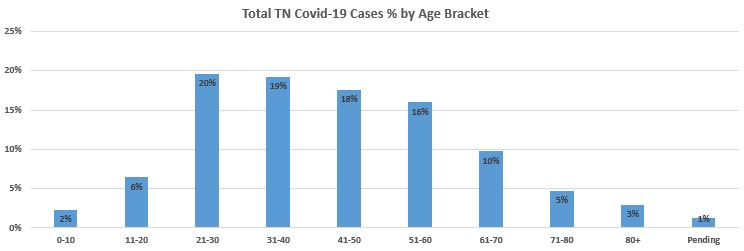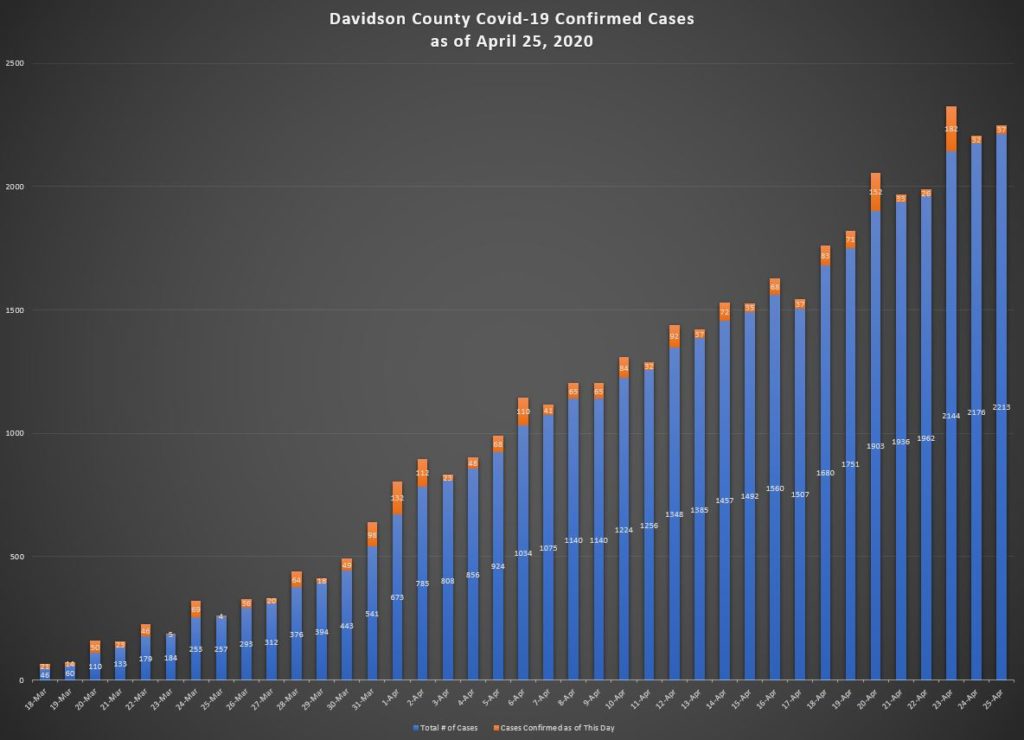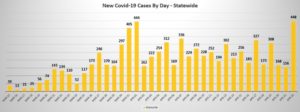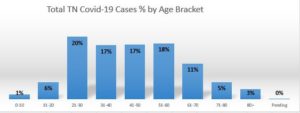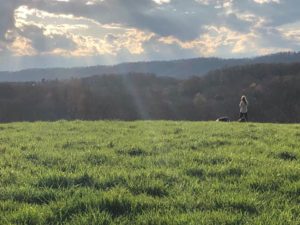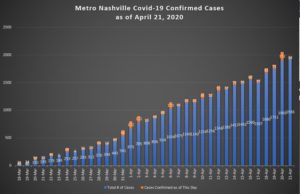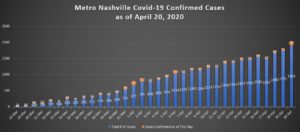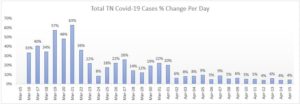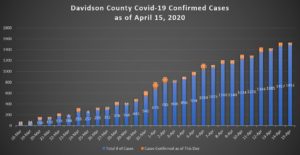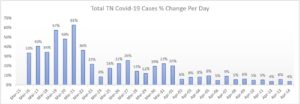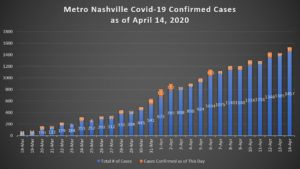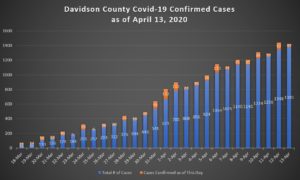Remarks as Delivered by Majority Leader Bill Frist, M.D.
“Manhattan Project for the 21st Century”
July 28, 2005
It is an honor for me to return to the Fellowship of the Grove and in this spectacular setting — the still waters, the glorious light — to share a few thoughts. To be honest, this setting — with so much attention — is humbling. You don’t get it as Majority Leader in the Senate.
In fact, one political pundit accurately said: “Being Majority Leader is like being a grounds keeper at a cemetery. You have a lot of people underneath you. But not one of them is listening.”
Like everyone else, politicians tend to look away from danger, to hope for the best, and pray that disaster will not arrive on their watch even as they sleep through it.
This is so much a part of human nature that it often goes unchallenged.
But we will not be able to sleep through what is likely coming soon — a front of unchecked and virulent epidemics, the potential of which should rise above your every other concern.
For what the world now faces, it has not seen even in the most harrowing episodes of the Middle Ages or the great wars of the last century.
We are unprepared for rampant epidemics. And even worse, we haven’t taken sufficient note of the fact that though individually each might be devastating, they are susceptible of either purposeful or accidental combination, —in which case they could be devastating almost beyond imagination.
The history of pathogens advances in parallel with and is no more static than our own — with which it is always intertwined, even if at times invisibly.
Sometimes it rushes forward with great speed and breathtaking evolutionary vigor — and sometimes it rests in slow backwaters.
When, in 1967, the U.S. Surgeon General declared that we were within site of winning the war on infectious diseases, we thought the slack water would last forever.
But that war never ended other than in wishful thinking.
*
Today more than a quarter of all deaths — 15 million each year — are due to infectious diseases.
These include 4 million from respirator infections, 3 million from HIV/AIDS, and 2 million from waterborne diseases such as cholera. This is a continuing and intolerable holocaust that, while sparing no class, strikes hardest at the weak, the impoverished, and the young.
Three million children die every year of malaria and diarrheal diseases alone — one child every 10 seconds.
As sobering as this may be, we’ve been nonetheless in a quiescent stage of the mutability of pathogens — a hiatus from which they are now poised to break out.
When viral diseases evolve normally — such as in the typical course of the human influenza virus undergoing small changes in its antigenicity, (and killing an average of 500,000 people annually throughout the world) — it is called an antigenic drift.
When they emerge with the immense power derivative of a jump from animal to human hosts followed by mutation or recombination with a human virus — as in the influenza pandemic of 1918 – 1919 (in which 500 million people were infected and 50 million died, including half a million in the United States) — it is called an antigenic shift.
Antigenic shifts are the result of random, fortuitous, and unavoidable changes.
Human population increase, concentration, and spread, intensification of animal husbandry, and greater wealth in developing countries brings animals (both wild and domestic) into closer contact with ever larger numbers of people.
War, economic catastrophe, and natural disasters subdue active measures of public health. The unprecedented societal overuse and misuse of antibiotics build unprecedented resistance within the microbial bug universe to our even most powerful ammunition.
Travel, trade, and climate change bring into contact disparate types and strains of disease.
And as a consequence of all this, microbes evolve, mutate, and find new lives in new hosts.
*
The evidence suggests that we could be at the threshold of a major shift in the antigenicity of not merely one but several categories of pathogens — for rarely if ever have we observed among them such variety, richness, opportunities for combination, and alacrity to combine and mutate.
You read the tid bits and pieces in the news. HIV, variant Creutzfeldt-Jakob disease (mad cow), avian influenzas such as H5N1, and SARS — all are merely the advance patrols of a great army forming out of sight — the lightning that (however silent and distant) gives rise to the dread of an approaching storm — a storm for which we … are … unprepared.
How can that be? How can the richest country in the world, with its great institutions, experts, and learned commissions, have failed to make every preparation — when preparation is all — for epidemics with the potential of killing off large segments of its population?
*
To see what might lie on the horizon one need only look to the relatively recent past. I have a photograph of an emergency hospital in Kansas during the 1918 influenza pandemic.
People lie miserably on cots in an enormous barn-like room with beams of sunlight streaming through high windows. It seems more crowded than the main floor of Grand Central Station at five o’clock on a weekday. In this one room several hundred people are in the throes of distress.
Think of two thousand such rooms filled with a crush of men, women, and children — 500,000 in all — and imagine that the shafts of sunlight that illuminate them for us almost a century later are the last light they will ever see.
Then bury them.
That is what happened.
How would a nation so greatly moved and touched by the 3,000 dead of September 11th react to half a million dead?
*
In 1918 – 1919 the mortality rate was 3 percent, which seems merciful in comparison to the 50 percent mortality rate of today’s highly pathogenic H5N1 avian flu. In just the last 18 months, avian flu has caused the death or destruction of over 140 million birds in 11 Asian nations.
And, most alarmingly, in 3 of those nations, H5N1 has taken the worried jump from birds to infect humans.
Should the virus shift and human-to-human transmission become sustained, imagine how many human lives avian flu will take.
How, then, would a nation greatly moved and touched by three thousand dead, react to 5 or 50 million dead?
*
And the new realities of terrorism and suicide bombers pull us one step further. How would we react to the devastation caused by a virus or bacteria or other pathogen unleashed not by the forces of nature, but intentionally by man?
*
During the Cold War, the Soviet Union, which stockpiled 5,000 tons annually of biowarfare-engineered anthrax (resistant to 16 antibiotics), also produced massive amounts of weaponized smallpox — just as the monumental effort to immunize the world’s children came to a successful close.
It is impossible to rule out that quantities of this or other deliberately manufactured pathogens such as pneumonic plague, tularemia, or botulinum toxin may find (or may have found) their ways into the possession of terrorists such as bin Laden and Zarqawi.
Although the United States now has enough smallpox vaccine for the entire population, we haves neither the means of distribution nor the immunized personnel to administer it in a generalized outbreak. Nor the certainty that the vaccine we have would even be relevant to a specific weaponized strain of the virus.
Hospitals and our long neglected public health infrastructure would be quickly overwhelmed.
Panic, suffering, and the spread of the disease would intensify as — because people were dead, sick, or afraid — the economy ceased to function, electrical power flickered out, and food and medical supplies failed to move.
Over months or perhaps years, scores of millions might perish, with whole families dying in their houses and no one to memorialize them or remove their corpses. Almost without doubt, the epidemic would spread to the rest of the world, for in biological warfare an attack upon one country is an attack upon all.
Every vestige of modernity would be overturned. The continual and illusory flirtation with immortality that is a hallmark of our scientific civilization would shatter.
And we would find ourselves looking back upon even the most difficult times of the last century as a golden age.
*
Despite the common wisdom, humanity has not moved beyond this kind of scenario. No — of late it has moved unnecessarily and gratuitously toward it.
Any number of known and unknown viruses — for which at present there is neither immunization nor cure — are at this very moment cooking in Asia and Africa — where they arise in hotbeds of densely intermingled human and animal populations.
We are in unexplored territory. The brew is stewing in a new, ideal mixing vessel. Economic and environmental changes in Asia have forced wilderness-deprived waterfowl to alight to feed amid farm animals — in newly dense populations due to recently acquired wealth and dietary expectations and in a culture in which live poultry is brought to market.
The reassortment of viral DNA as a result of this mingling is so frenzied that it is only a matter of time until the emergence of a virus unequaled in transmissibility and virulence.
The epidemiological calculus of flu is notoriously volatile due to the unknowns of rapid reassortment. We do know now, however, we are woefully under prepared even for a virus that we can today foresee — much less for one that we cannot.
No such viruses have yet reached critical mass, or leapt from the channels imposed by their inherent limitations, environmental obstacles, and deliberate actions to contain them.
But who is to say they cannot?
I certainly won’t. Not with what I’ve seen.
I was in China at the height of the SARS outbreak and witnessed the government’s confused, deceptive, and miserable initial cover-up and response. As a doctor on annual medical mission trips, I have treated patients in the Sudan and, just two weeks ago, in Tanzania. I have seen a determined epidemic — HIV/AIDS — kill millions and hollow out entire societies on the African continent.
The evidence I have seen as doctor, scientist, and policy maker, the patterns of history, and new facts — such as rapid, voluminous, and essential travel and trade; the decline of staffed hospital beds; and a now heavily urbanized and suburbanized American population dependent as never before upon “just in time” but easily disrupted networks of services and supply — lead me to believe that such pathogens could result in the immensely high death tolls to which I have alluded.
*
Take the virus that is today the gravest threat — avian flu.
A vaccine would not become available, at best, until 6 to 9 months after the outbreak of a pandemic. Even then, the vaccine would not be available in mass quantities.
And even then we do not know if that vaccine would work. It’s still experimental.
So, in essence, we have no vaccine for avian flu. Nor do we have enough of the only effective anti-viral agent Tamiflu stockpiled to treat more than one percent of our population for avian flu. Only 10 of you could be treated.
*
It’s true that neither Avian flu nor these other viruses have yet spread geometrically — instantly and irrevocably overcoming health care systems and pulling us backward across thresholds of darkness that we long hoped we would never cross again.
And yet this they might do — either entirely on their own in nature or as a result of deliberate, purposeful human intervention.
No intelligence agency (no matter how astute) and no military (no matter how powerful and dedicated) can assure that a few technicians of middling skill using a few thousand dollars worth of readily available equipment in a small and apparently innocuous setting cannot mount a first-order biological attack.
It’s possible today to synthesize virulent pathogens from scratch, or to engineer and manufacture prions that, introduced undetectably over time into a nation’s food supply, would after a long delay afflict millions with a terrible and often fatal disease.
It’s a new world.
Unfortunately, the permutations are so various that the research establishment as now constituted cannot set up lines of investigation to anticipate even a small proportion of them.
But is it really reasonable to assume that anyone might resort to biological warfare?
Indeed it is.
Though Al-Qaida’s leadership has been decimated, it has declared that, “We have the right to kill four million Americans — two million of them children . . . . [and] it is our right to fight them with chemical and biological weapons.”
It’s hardly necessary, however, to rely upon stated intent. One need only weigh the logic of terrorism, its evolution, its absolutist convictions, and the evidence in documents and materials found in terrorist redoubts.
And though not as initially dramatic as a nuclear blast, biological warfare is potentially far more destructive than the kind of nuclear attack feasible at the operational level of the terrorist.
And biological war is itself distressingly easy to wage.
Never have we had to fight such a battle, to protect so many people against so many threats that are so silent and so lethal.
*
So, I ask again how it is that we are so unprepared either for naturally occurring epidemics of newly emergent diseases or those that will be deliberately and purposefully induced?
I propose that we take the measure of this threat and make preparations today to engage it with the force and knowledge adequate to throw it back wherever and however it may strike.
It need not be invincible and we need not fall to our knees before it. Means adequate to the success of a defensive plan are present in great profusion. Whereas the approaching biological shift is gathering force like a massing army, providence has massed an army to meet it.
Having themselves expanded geometrically, the life sciences have come to the threshold of a great age, and to cross it they need only encouragement and a signal from the body politic to put their resources in play.
*
We are not without weapons in this war. They are present in the stupendous material and intellectual wealth of the civilized world, which, despite current divisions of action and opinion, has everything to lose in common.
They are present in the great stores of science and technology amassed over thousands of years of civilization — in the many hundreds of universities, advanced research institutions, and hospitals — yes, in the United States and Europe, but also in Latin America, India, China, and dozens of other countries on six continents.
They are present in the revolution spawned by information technology and our vast, instant and interconnected ability to communicate and share information. They are present in the private sector’s ruthless focus, which, though frequently condemned for its lack of humanity, could well be the instrument that saves us in the end.
They are present in the special temperament and brilliance of individual scientists; in the magnificent light that comes of the surprising and ingenious application of new technologies; and in the vigor, intelligence, and decency of free and unoppressed peoples.
*
So what must we do?
I propose an unprecedented effort — a “Manhattan Project for the 21st Century” — not with the goal of creating a destructive new weapon, but to defend against destruction wreaked by infectious disease and biological weapons.
I speak of substantial increases in support for fundamental research, medical education, emergency capacity, and public health infrastructure. I speak of an unleashing of the private sector and unprecedented collaboration between government and industry and academia. I speak of the creation of secure stores of treatments and vaccines and vast networks of distribution.
Above all, I speak not of the creation of a forest of bureaucratic organization charts and the repetition of a hundred million Latinate words in a hundred million meetings that substitute for action, but action itself — without excuses, without exceptions — with the goal of protecting every American and the capability to help protect the people of the world.
I call for the creation of the ability to detect, identify, and model any emerging or newly emerging infection (present or future) natural or otherwise — for the ability to engineer the immunization and cure, and to manufacture, distribute, and administer what we need to get it done and to get it done in time.
*
This is a bold vision.
But it is the kind of thing that, once accomplished, is done. And it is the kind of thing that calls out to be done — and that, if not done, will indict us forever in the eyes of history.
In diverting a portion of our vast resources to protect nothing less than our lives, the lives of our children, and the life of our civilization, many benefits other than survival would follow in train — not least the satisfaction of having done right.
If the process of scientific discovery proceeds as usually it does, we will come to understand diseases that we do not now understand and find the cures for diseases that we cannot now cure.
And, as always, disciplined and decisive action in facing an emergency can, even in the short run, compensate for its costs — by adding to the economy both a potent principle of organization and a stimulus like war, but war’s opposite in effect.
This would power the productive life of the country into new fields, transforming the information age with unexpected rapidity into the biotechnical age that is to come.
All this, if the nation can be properly inspired in its own defense and protection — perhaps just in time.
We must open our eyes to face the single greatest threat to our safety and security today, but also to seize our greatest single opportunity.
*
And allow a conservative Senator from Tennessee (who is by nature skeptical of overzealous government action) to affirm the root conservative principle that if the life of the nation is potentially at risk, no effort should be judged too ambitious, no price too high to pay, no division too wide to breach.
I’m aware of the difficulties. But the United States is as blessed today as it has been since its beginnings. We are: the wealthiest, free-est, and most scientifically advanced of all societies; the first republican democracy; and the first modern state.
And although we as a nation have suffered criticism of late, we’ve been willing since our Founding, and are willing still, to pursue certain ideals.
Though not infrequently condemned from the precincts of cynicism, America has mostly left cynics in its wake — sometimes after saving them from floods that they themselves have unleashed.
Today, in the majesty of this setting, I’ve tried to impress upon you the urgency I feel in a matter concerning not only America but the world — for pandemics (whether natural or intentional) know neither borders, nor race, nor who is rich nor who is poor.
They know only what is human, and it is this that they strike, casting aside the vain definitions that otherwise divide us.
It is my pre-eminent obligation as a public servant and my sacred duty as a physician to ask you to support the essence of this proposal.
In respect of human mortality, for the sake of your own families and children, for the honor and satisfaction of doing right, I bid you join in this effort.
*
As we celebrate as Bohemians and guests in fellowship in this magnificent and glorious space, may God preserve us all, and may our actions and foresight make us worthy of His preservation.
***


